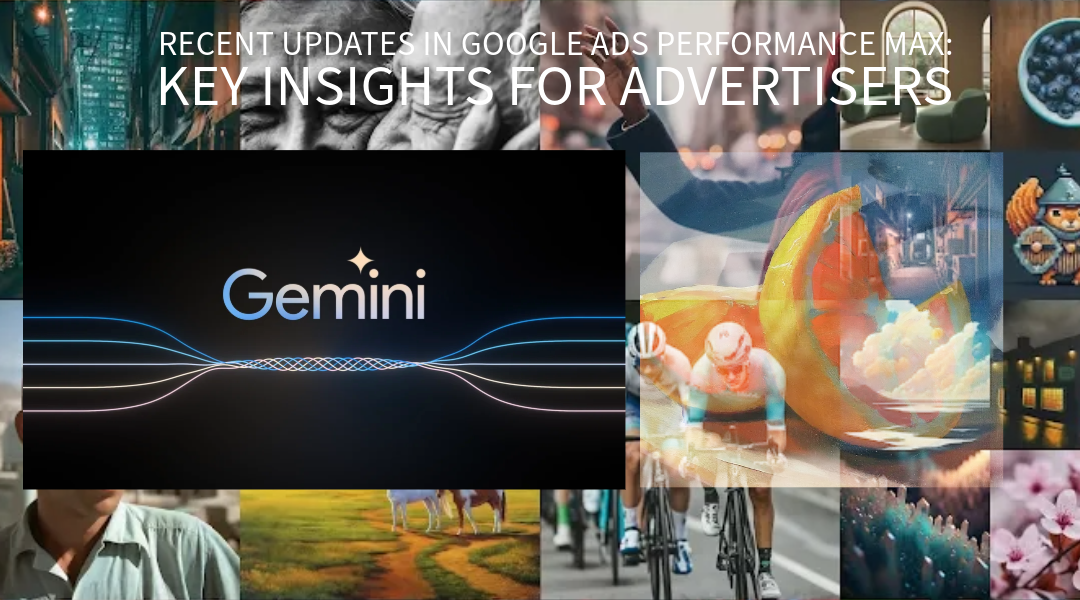Last Updated: May 19, 2024
Since Google introduced Performance Max campaigns in 2021, there has been a continuous effort to refine and enhance this versatile campaign type. Originally, the focus was on enabling easy transitions from traditional campaign types like Shopping, Dynamic Search Ads, or Display into Performance Max. However, the focus of recent updates has shifted significantly towards optimizing creative assets and providing better control over targeting settings. Here, I’ll explore some of the latest enhancements to Performance Max and discuss their implications for digital marketers.
Enhancements to Creative Assets in Performance Max
Creative assets are crucial in making the first impression on potential customers. With Performance Max’s ability to operate across all Google-owned platforms, the variability in how ads are presented is vast. Google has made it clear that high-quality creatives are a priority. Recent updates include:
- Enhanced Ad Strength Metrics Google now evaluates the variety and number of creative assets provided, impacting the overall ad strength. While ad strength shouldn’t be the sole performance indicator, it’s important to consider it as Google emphasizes these elements. High-quality, diverse creatives could mean the difference in winning an auction against a competitor with less diverse ad assets.
- New Tools for Asset Creation Recognizing the challenge of producing engaging creatives, Google has introduced additional support:
- Gemini, Google’s advanced AI model, aids in generating text for headlines and sitelinks.
- Imagen 2, a sophisticated text-to-image AI, assists advertisers in creating compelling images from basic text descriptions.
These tools are designed to simplify the creative process, allowing advertisers to enhance their asset quality without heavy reliance on design teams.
Targeting Updates in Performance Max
Originally, Performance Max offered limited insights into targeting. This has changed with Google providing more transparency and control over ad placements:
- Brand Exclusion Lists This update allows advertisers to exclude specific brand terms from their Performance Max campaigns, addressing issues like budget wastage on branded searches that could overlap with existing campaigns.
- Exclusion of Sites and Search Partners Advertisers can now exclude specific sites and search partners from their Performance Max campaigns using account-level placement exclusion lists. This is crucial for avoiding unproductive ad placements and focusing the budget on sites that generate actual value.
What These Updates Mean for Advertisers
The latest updates to Google Ads Performance Max are indicative of Google’s dual focus on enhancing the quality of creative assets and providing advertisers with more precise control over their campaign targeting. These changes not only allow for the creation of more effective and appealing ads but also ensure that these ads are displayed in contexts that align more closely with the advertiser’s target demographics and campaign goals.
For advertisers, it’s crucial to stay updated with these changes and adapt their strategies accordingly. Leveraging the new tools for creating better creatives, and taking advantage of enhanced targeting controls, can significantly improve campaign performance and ROI.
Conclusion
Google’s continuous updates to Performance Max campaigns reflect a commitment to improving both the efficiency and effectiveness of digital advertising on their platforms. By understanding and utilizing these updates, advertisers can better navigate the complexities of online advertising and achieve more successful outcomes.
For those looking to dive deeper into optimizing their Performance Max campaigns or starting fresh with advanced strategies, now is the time to explore these new tools and updates to maximize your digital advertising efforts.



